8i | 9i | 10g | 11g | 12c | 13c | 18c | 19c | 21c | 23ai | Misc | PL/SQL | SQL | RAC | WebLogic | Linux
Oracle Enterprise Manager Cloud Control 12c Release 5 Installation on Oracle Linux 5.11 and 6.6
This article describes the installation of Oracle Enterprise Manager Cloud Control 12c Release 5 on Oracle Linux 5.11 and 6.6. (x86_64).
At the time of writing, Cloud Control 12.1.0.5 is certified on Oracle Linux 5 and 6, but not on Oracle Linux 7. Check the certification matrix before attempting installations on any other Oracle Linux version.
- Software
- OS Installation
- Database Installation (Software-Only)
- Repository Database Creation Using Template
- Cloud Control 12c Installation
- Startup/Shutdown
- Server has a weak, ephemeral Diffie-Hellman public key
Related articles.
- Oracle Enterprise Manager Cloud Control 12c Post-Installation Setup Tasks
- Upgrade Oracle Enterprise Manager Cloud Control 12c Release 4 (12cR4) to Release 5 (12cR5)
Software
Download the following software:
- Oracle Linux 5.11 or 6.6 (x86_64)
- Oracle Database (x86_64) (11.2.0.3, 11.2.0.4 or 12.1.0.2)
- Enterprise Manager Cloud Control 12c Release 4 (12.1.0.5) (x86_64)
- 12.1.0.2 DB Template for EM 12.1.0.5 on Linux x86-64
OS Installation
Install Oracle Linux (OL) in the same way you would for a regular Oracle Database installation. You can see examples of this type of installation below. Remember to check database installation article (listed below) for the specific package group selection.
During this installation I used a virtual machine with 8G RAM and 100G disk space. The swap size was set at 8G, the firewall was disabled and SELinux was set to permissive.
Database Installation (Software-Only)
For this installation I'm using 12.1.0.2 for the repository database, so use the installation instructions from one of the following articles.
- Oracle Database 12c Release 1 (12.1) Installation On Oracle Linux 5
- Oracle Database 12c Release 1 (12.1) Installation On Oracle Linux 6
Do a software-only installation, as we will be using the template to create the repository database.
The installation documentation says the following packages are necessary for the cloud control installation. If you have performed the database installation as described in one of the above articles, most of these prerequisites will already have been met.
# OL5 and OL6 yum install make -y yum install binutils -y yum install gcc -y yum install libaio -y yum install glibc-common -y yum install libstdc++ -y yum install libXtst -y yum install sysstat -y yum install glibc-devel -y # OL6 Only yum install glibc-devel.i686 -y # OL5 Only yum install glibc-devel.i386 -y yum install setarch -y yum install rng-utils -y yum install xorg-x11-utils -y
The database software installation is now complete.
Repository Database Creation Using Template
Unzip the repository template under the ORACLE_HOME.
$ cd $ORACLE_HOME/assistants/dbca/templates $ unzip /tmp/12.1.0.2.0_Database_Template_for_EM12_1_0_5_0_Linux_x64.zip
Start the Database Configuration Assistant (DBCA) and create a new database using the template.
$ dbca
Select the "Create Database" option and click the "Next" button.
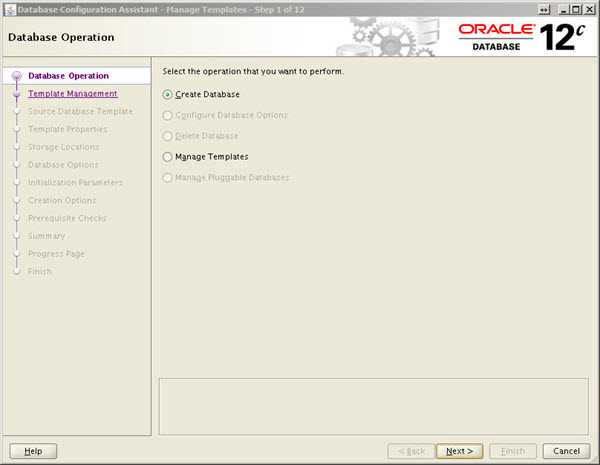
Select the "Advanced Mode" option and click the "Next" button.
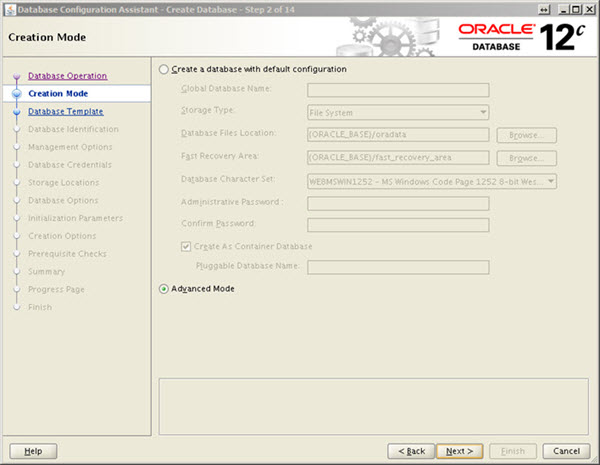
Select the template for the appropriate size of EM installation you need. In this case I've used the small option. Click the "Next" button.
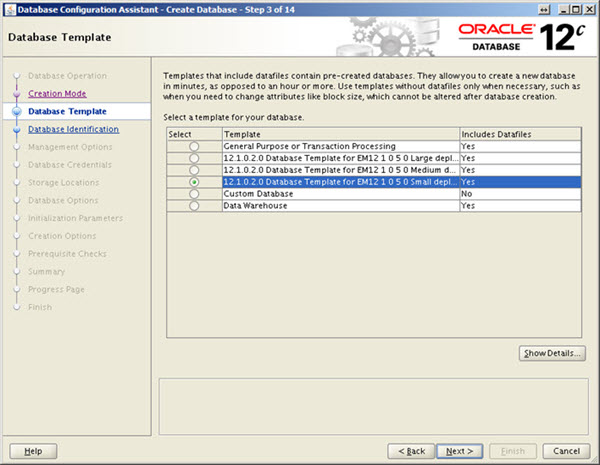
Enter the Global Database Name and SID, then click the "Next" button.
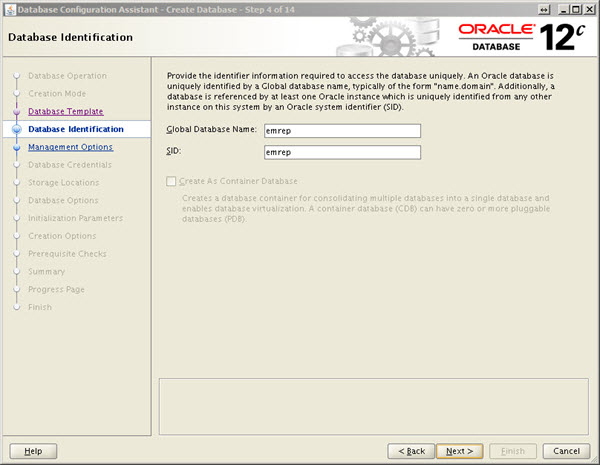
Make sure both the "Configure Enterprise Manager (EM) Database Express" and "Register with Enterprise Manager (EM) Cloud Control" options are unchecked, then click the "Next" button.
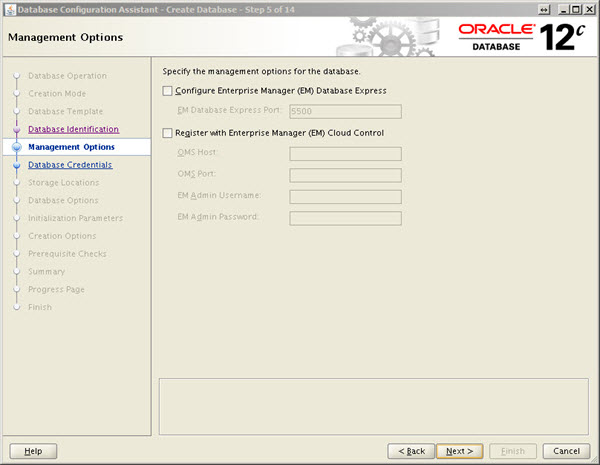
Enter the database credentials, then click the "Next" button.
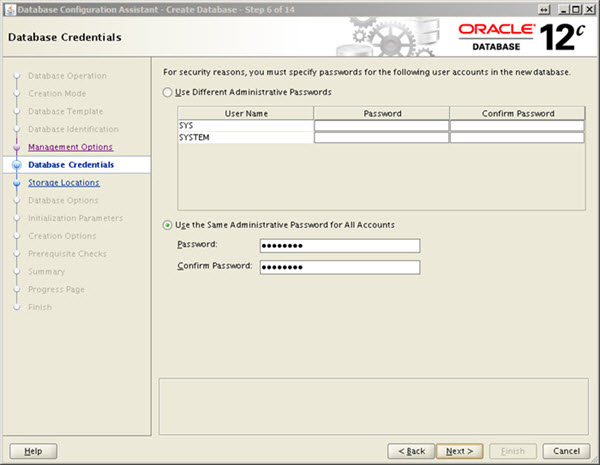
Enter the listener details and click the the "Next" button.
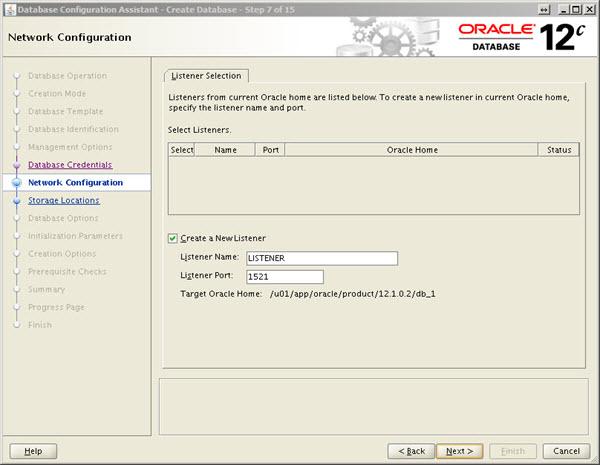
Choose the preferred location for the database files, then click the "Next" button.
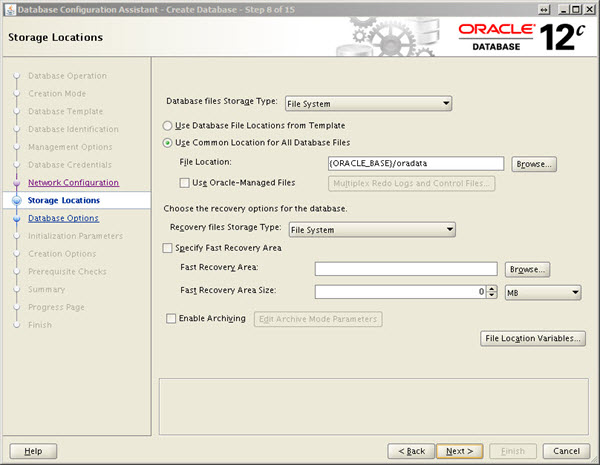
Accept the default settings and click on the "Next" button.
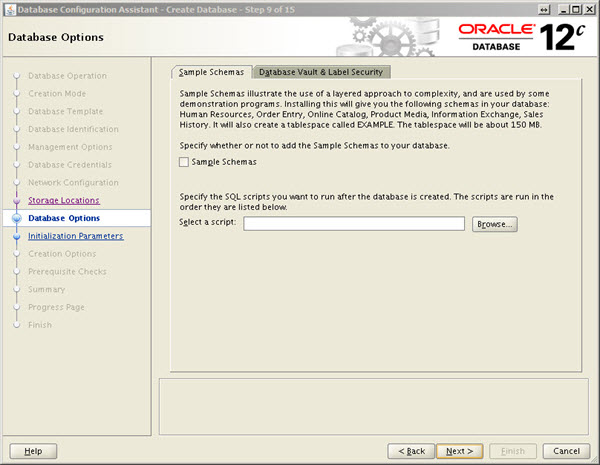
Amend the memory settings as desired, click on the "Character Sets" tab and select the "AL32UTF8" option and click the "Next" button. In this case I'm accepting the memory defaults.
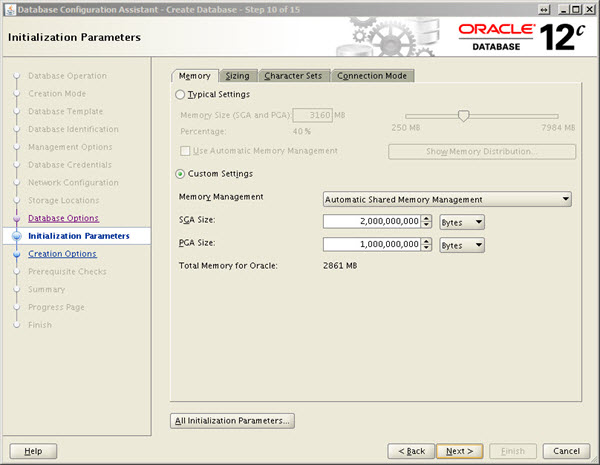
Click the "Next" button to create the database.
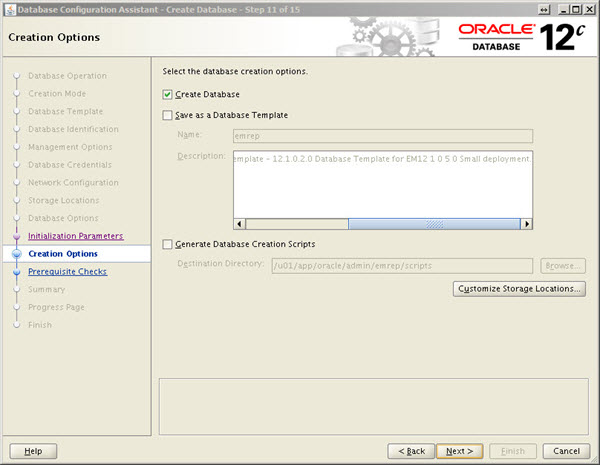
If you are happy with the summary information, click the "Finish" button.
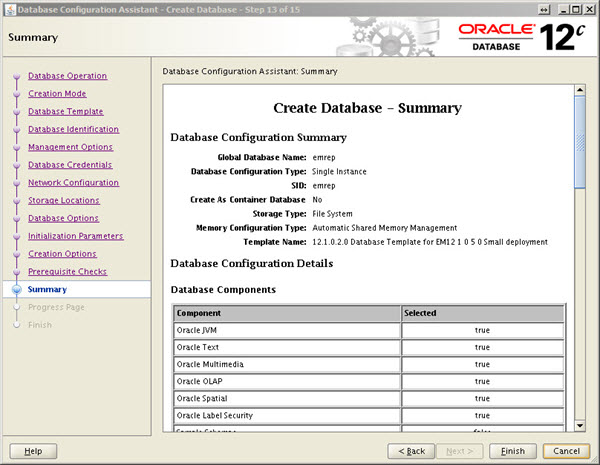
Wait while the database is created.
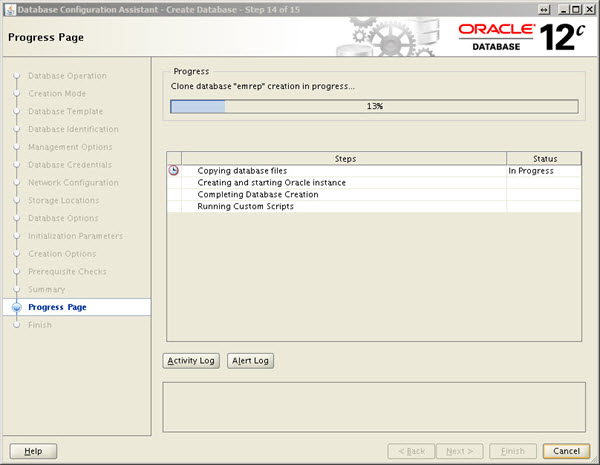
Once the database creation is complete, click the "Close" button.
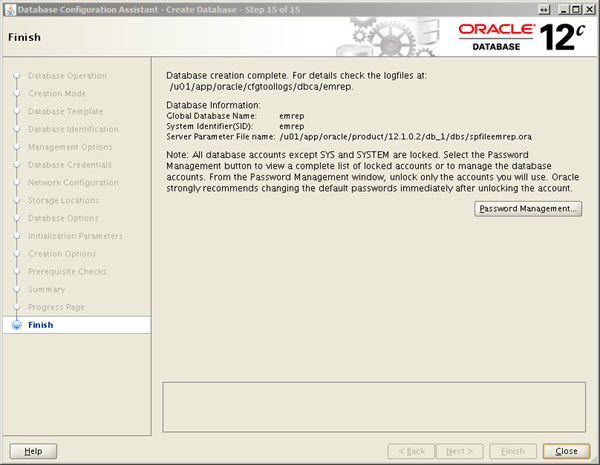
Cloud Control 12c Installation
Make the following directories to hold the management server and agent.
$ mkdir -p /u01/app/oracle/oms12cr5 $ mkdir -p /u01/app/oracle/agent12c
Unzip the Cloud Control media, the start the installation by running the "runInstaller" script.
$ mkdir em12cr5 $ unzip -d em12cr5 em12105_linux64_disk1.zip $ unzip -d em12cr5 em12105_linux64_disk2.zip $ unzip -d em12cr5 em12105_linux64_disk3.zip $ cd em12cr5 $ ./runInstaller
If you wish to receive support information, enter the required details, or uncheck the security updates checkbox and click the "Next" button. Click the "Yes" button the subsequent warning dialog.
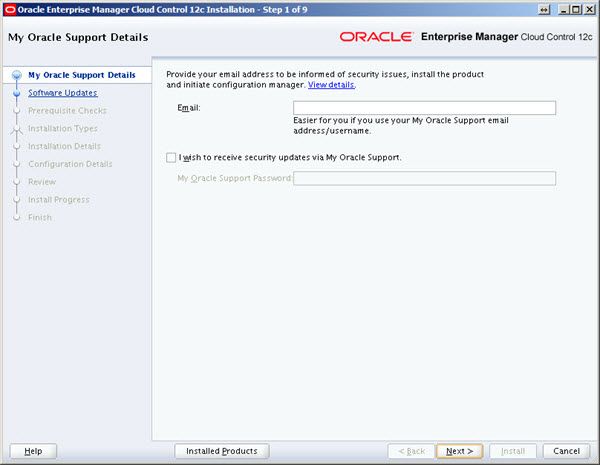
If you wish to check for updates, enter the required details, or check the "Skip" option and click the "Next" button.
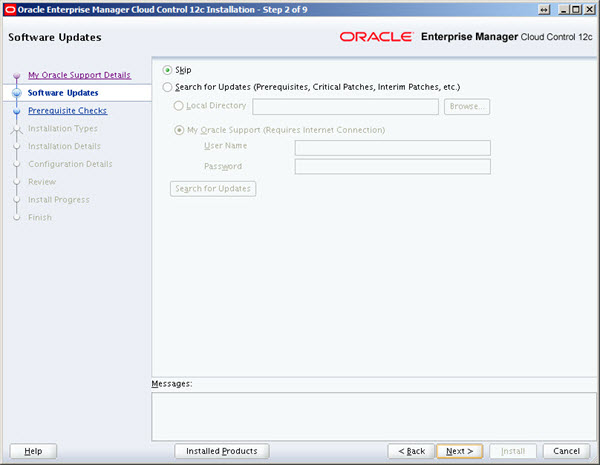
If you have performed the prerequisites as described, the installation should pass all prerequisite checks. Click the "Next" button.
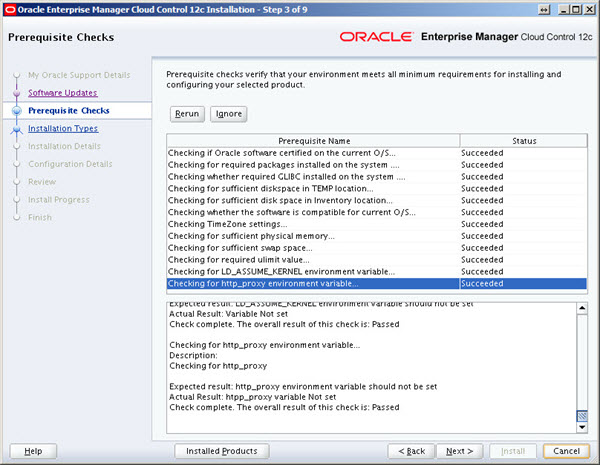
Select the "Create a new Enterprise Manager System" and "Simple" options, then click the "Next" button.
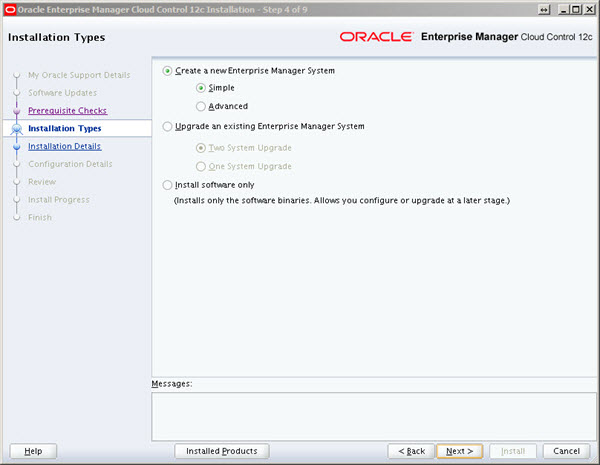
Enter the middleware and agent locations, then click the "Next" button.
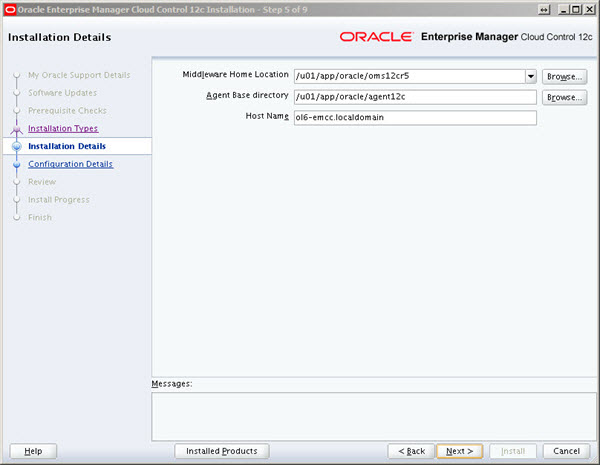
Enter the administrator password and database repository details, then click the "Next" button.
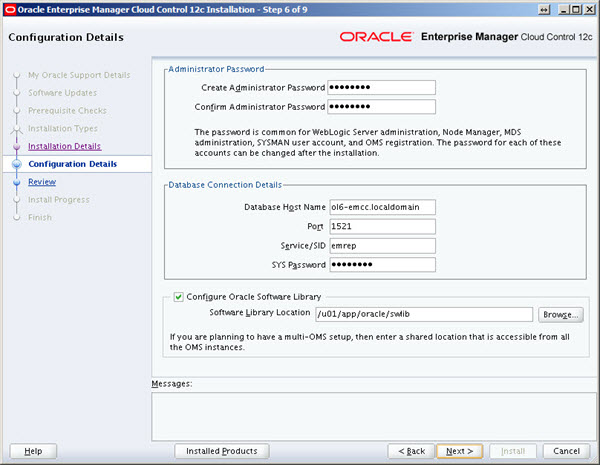
If you are happy with the review information, click the "Install" button.
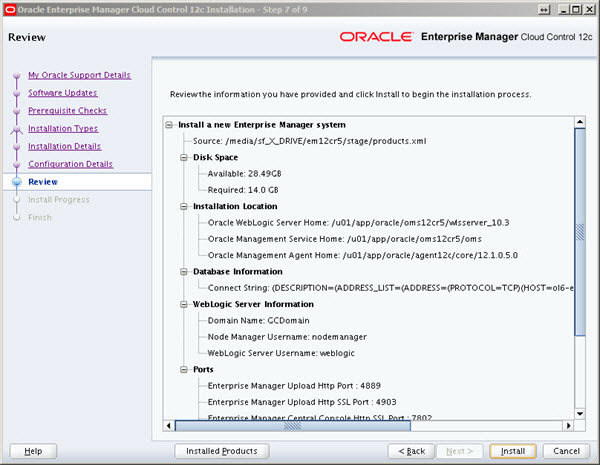
Wait while the installation and configuration take place. Notice the "Repository Out Of Box Configuration" step. If we had not used the database template, this would read "Repository Configuration" and the contents of the repository would be created from scratch.
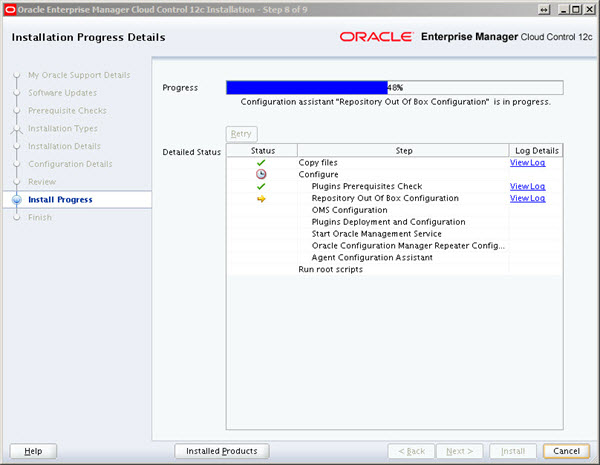
When prompted, run the root scripts, then click the "OK" button.
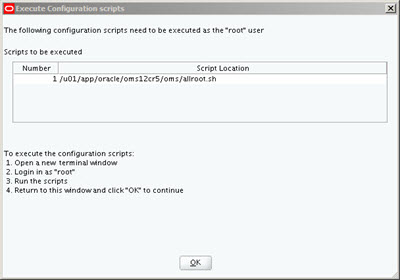
Make note of the URLs, then click the "Close" button to exit the installer. A copy of this information is available in the "/u01/app/oracle/oms12cr5/oms/install/setupinfo.txt" file.
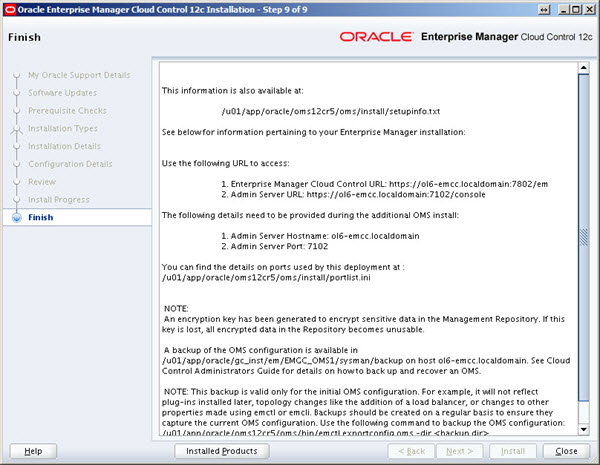
The login screen is available from a browser using the URL provided in the previous screen ("https://ol6-emcc.localdomain:7802/em"). Log in with the username "sysman" and the password you specified during your installation.
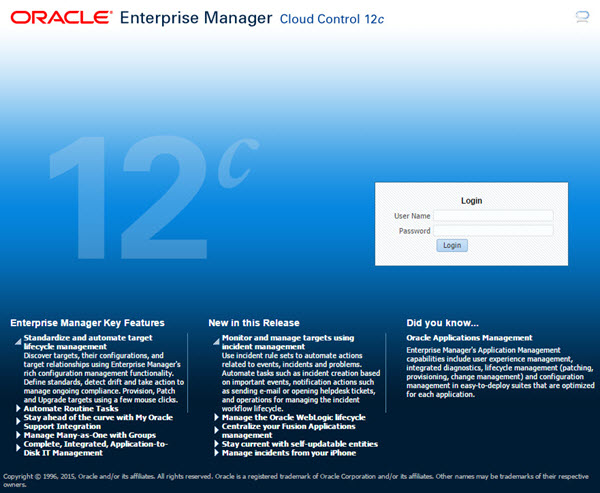
Once logged in, you are presented with a with the "Accessibility Preference" screen. Click the "Save and Continue" button and you are presented with the the "License Agreement" screen. Click the "I Accept" button and you are presented with the homepage selector screen. On the right side of the screen it lists the post-installation setup tasks you need to work through. I have these documented in a separate article. Select the desired homepage (I chose Summary).
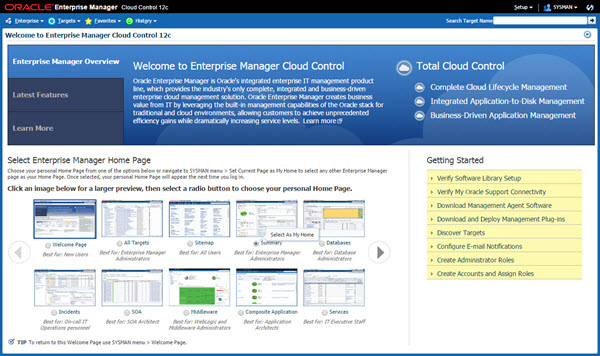
You are presented with the selected screen as the console homepage.
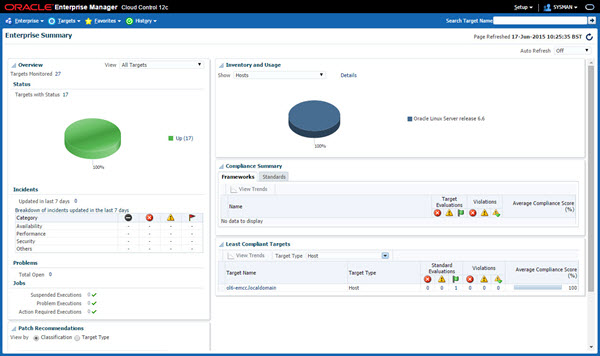
I've not see it, but some people have reported the following error during the installation.
ORA-14400: inserted partition key does not map to any partition
If you see this, run the following as the SYSMAN user, then resume the installation.
exec gc_interval_partition_mgr.partition_maintenance; exec mgmt_audit_admin.add_audit_partition;
Startup/Shutdown
Cloud Control is set to auto-start using the "gcstartup" service. The "/etc/oragchomelist" file contains the items that will be started by the system.
/u01/app/oracle/oms12cr5/oms /u01/app/oracle/agent12c/core/12.1.0.5.0:/u01/app/oracle/agent12c/agent_inst
On a simple installation the default auto-start will cause a problem as Cloud Control will attempt to start before the database has started. The service can be disabled by commenting out (using #) all the contents of the "/etc/oragchomelist" file to prevent the auto-start and use start/stop scripts described below.
If the start/stop needs to be automated, you can do it in the usual way using Linux service that calls your start/stop scripts that include the database management.
Use the following commands to turn on all components installed by this article.
#!/bin/bash export ORACLE_HOME=/u01/app/oracle/product/12.1.0.2/db_1 export OMS_HOME=/u01/app/oracle/oms12cr5/oms export AGENT_HOME=/u01/app/oracle/agent12c/agent_inst # Start everything $ORACLE_HOME/bin/dbstart $ORACLE_HOME $OMS_HOME/bin/emctl start oms $AGENT_HOME/bin/emctl start agent
Use the following commands to turn off all components installed by this article.
#!/bin/bash export ORACLE_HOME=/u01/app/oracle/product/12.1.0.2/db_1 export OMS_HOME=/u01/app/oracle/oms12cr5/oms export AGENT_HOME=/u01/app/oracle/agent12c/agent_inst # Stop everything $OMS_HOME/bin/emctl stop oms -all $AGENT_HOME/bin/emctl stop agent $ORACLE_HOME/bin/dbshut $ORACLE_HOME
Server has a weak, ephemeral Diffie-Hellman public key
To fix this problem, follow the instructions in MOS Note 1510058.1.
For more information see:
- Oracle Enterprise Manager Cloud Control 12c Post-Installation Setup Tasks
- Upgrade Oracle Enterprise Manager Cloud Control 12c Release 4 (12cR4) to Release 5 (12cR5)
- Enterprise Manager Cloud Control Basic Installation Guide 12c Release 5 (12.1.0.5)
- Regenerating the EM 12c-WLS Demo Identity Certificate with 1024 bit Keystrength (to fix the browser error: ssl_error_weak_server_cert_key) (Doc ID 1510058.1)
Hope this helps. Regards Tim...